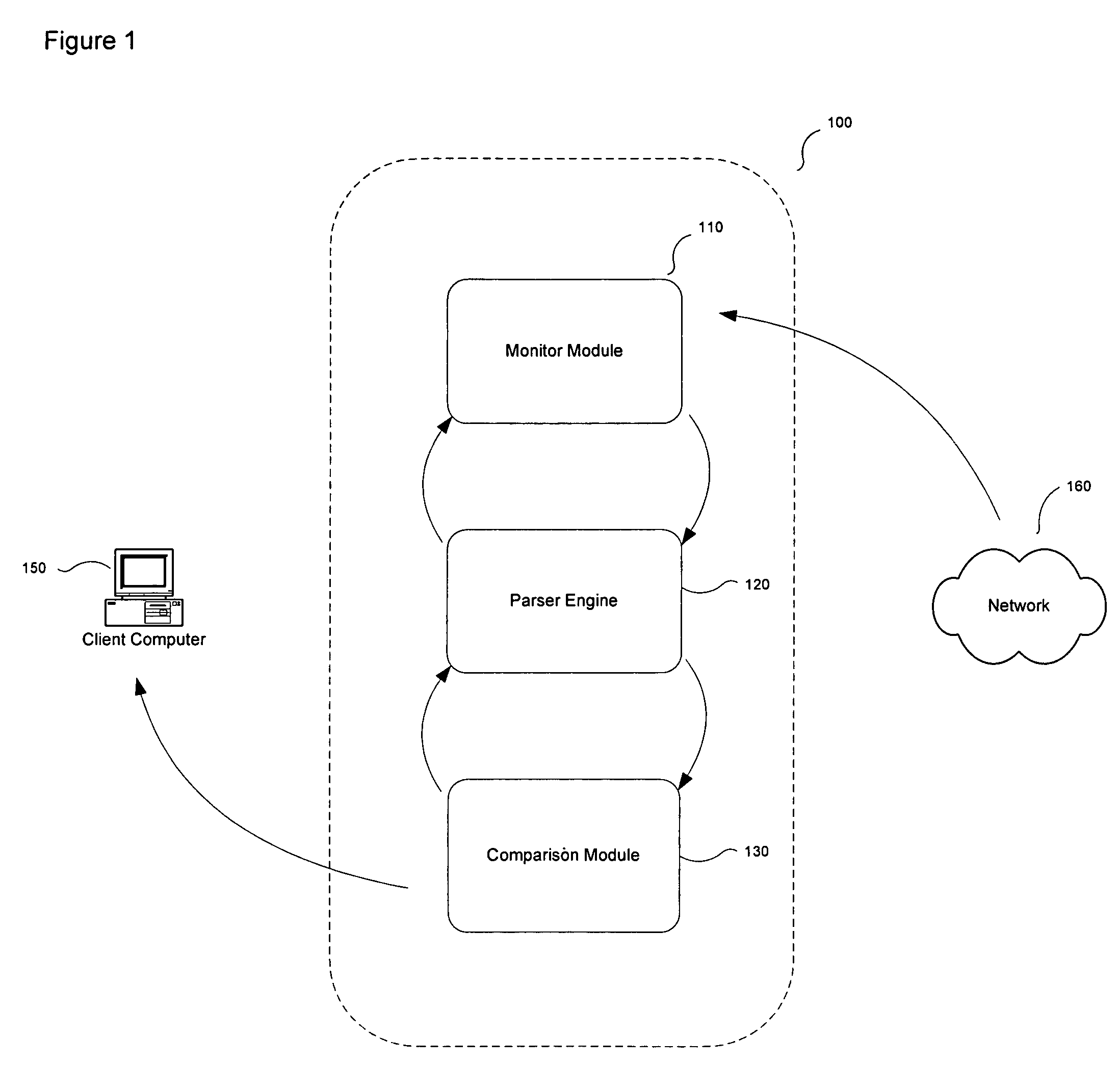Determining whether e-mail messages originate from recognized domains
a domain and e-mail technology, applied in the field of computer security, can solve the problems of increasing the frequency of phishing campaigns at a dramatic and alarming rate, the scam took several days to identify and resolve, and the fraud is a fraudulent activity
- Summary
- Abstract
- Description
- Claims
- Application Information
AI Technical Summary
Problems solved by technology
Method used
Image
Examples
Embodiment Construction
[0014]FIG. 1 is a high level block diagram illustrating a system for identifying electronic messages originating from known domains according to some embodiments of the present invention. A message manager 100 monitors incoming electronic messages such as e-mail, instant messages, and the like to determine whether each message originates from a recognized domain. Messages that appear to be from a recognized domain are examined tQ confirm the legitimacy of the links contained within the body of the message. Responsive to the results of these comparisons, the message manager 100 determines whether the message actually originates from a recognized domain.
[0015]It is to be understood that although the message manager 100 is illustrated as a single entity, as the term is used herein a message manager 100 refers to a collection of functionalities that can be implemented as software, hardware, firmware or any combination of these. Where the message manager 100 is implemented as software, i...
PUM
 Login to View More
Login to View More Abstract
Description
Claims
Application Information
 Login to View More
Login to View More - R&D
- Intellectual Property
- Life Sciences
- Materials
- Tech Scout
- Unparalleled Data Quality
- Higher Quality Content
- 60% Fewer Hallucinations
Browse by: Latest US Patents, China's latest patents, Technical Efficacy Thesaurus, Application Domain, Technology Topic, Popular Technical Reports.
© 2025 PatSnap. All rights reserved.Legal|Privacy policy|Modern Slavery Act Transparency Statement|Sitemap|About US| Contact US: help@patsnap.com



